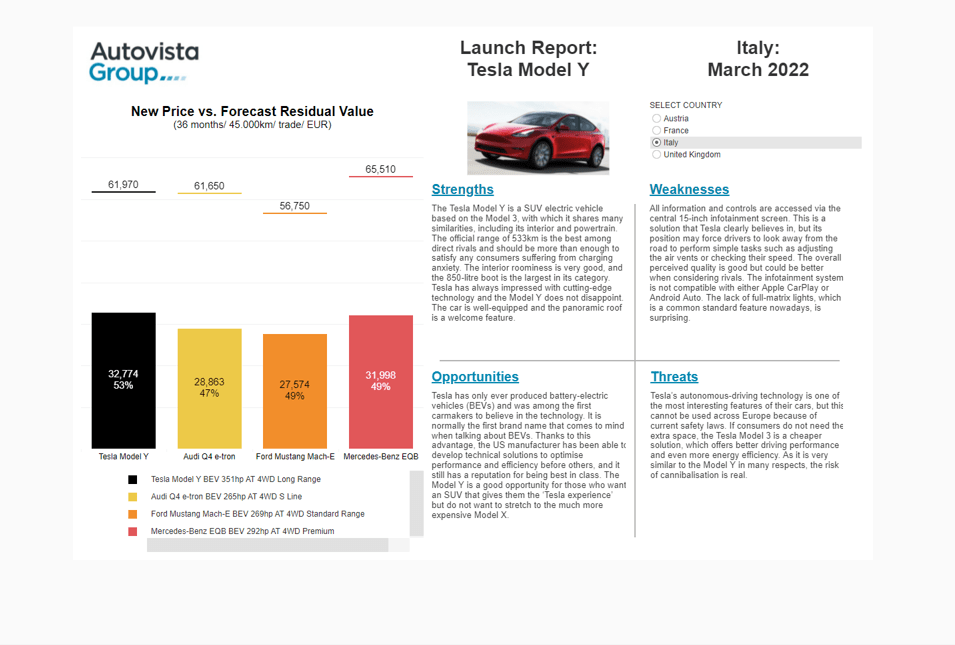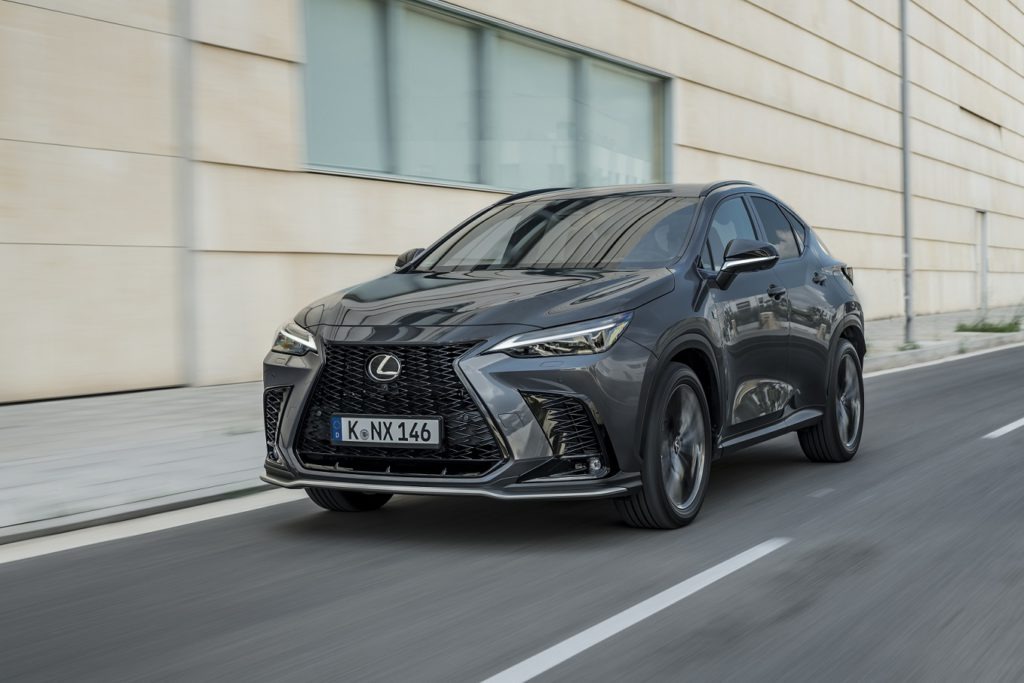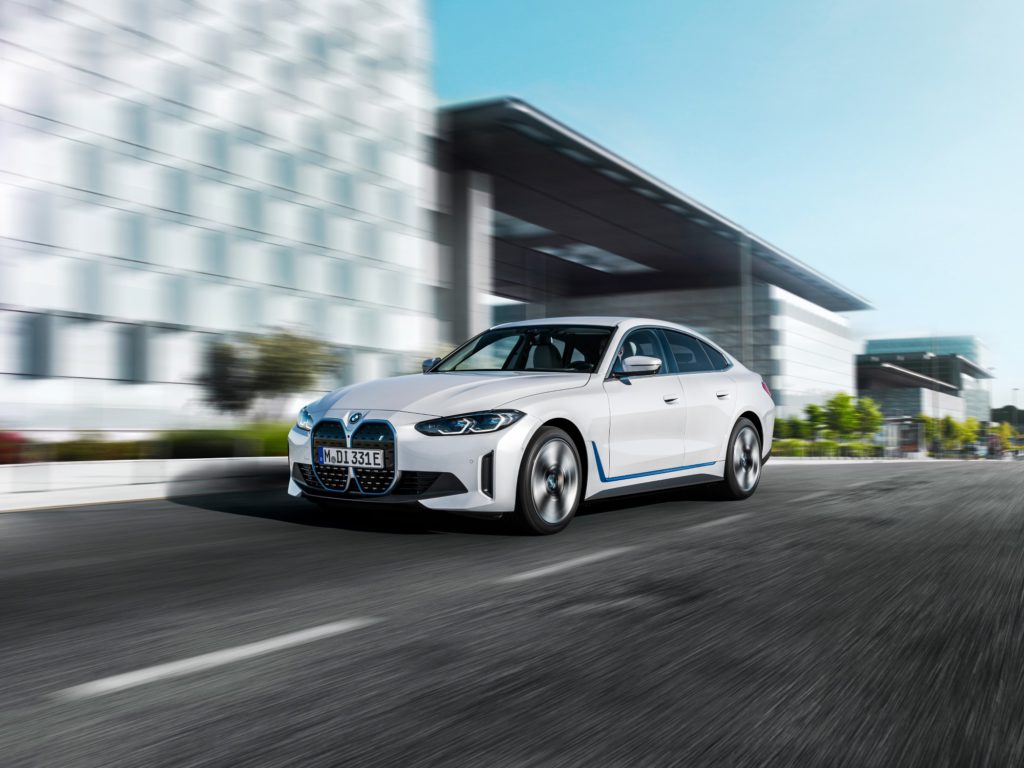Launch Report: Tesla Model Y offers added practicality and class-leading range
25 March 2022

The Tesla Model Y battery-electric vehicle (BEV) SUV is based on the brand’s best-selling Model 3, with which it shares many similarities including its interior and powertrain. It is a few centimetres wider, with a raised seating position, and features electric foldable rear seats with controls located in the boot.
The electric vehicle offers multiple storage solutions and has the largest boot capacity, at 850 litres, among BEV rivals in the D-SUV segment. The impressive panoramic roof floods the interior with light and gives a greater sense of space, especially in the rear.
With its clean and minimalistic design, the Model Y is clearly recognisable as a Tesla both inside and out. All information and controls, even the ability to open the glovebox, are accessed through a 15-inch infotainment screen. This is a solution that Tesla clearly believes in. However, the touchscreen’s central position may force drivers to look away from the road to perform simple tasks, such as checking their speed in the absence of both a head-up display and an instrument cluster.
The build quality and choice of materials in Tesla models have often been criticised, although they have improved significantly and the overall perceived quality in the Model Y is good. The faux-leather seat material will appeal to consumers interested in vegan cars but is of a slightly lower quality than real leather. Tesla’s 14-speaker sound system is comparable to branded hi-fi systems, but the proprietary infotainment system is not compatible with either Apple CarPlay or Android Auto. The lack of full-matrix lights, which is a common standard feature nowadays, is surprising too.
Tesla’s greatest strengths lie in the performance and efficiency of their electric drivetrain, even at higher speeds. The Model Y’s official range of 533km is the best among direct rivals and more achievable in real-world driving too. This should be more than enough to satisfy any consumers suffering from charging anxiety. The brand’s own well-developed fast-charging infrastructure, the Tesla Supercharger network, should also not be overlooked as a competitive advantage.
The Tesla Model Y offers the best blend of practicality and price from the carmaker so far, positioned between the cheaper, but smaller, Model 3 and the significantly more expensive Model X. Nevertheless, the Model 3 is more affordable, offers a superior driving experience and an even greater official electric-vehicle range, of 602km. The risk of cannibalisation, therefore, is real.
The car’s roominess and high level of standard equipment holds it in good stead, especially as very few truly practical BEVs are currently available. However, other battery-electric vehicles with similar ranges are becoming increasingly available from more ‘established’ brands.
View the Autovista Group dashboard, which benchmarks the Tesla Model Y in Austria, France, Italy, and the UK for more details. The interactive launch report presents new prices, forecast residual values, and SWOT (strengths, weaknesses, opportunities, and threats) analysis.
Tesla is normally the first brand that comes to mind when talking about battery-electric vehicles. The company was founded to specifically focus on the electric-vehicle market and has no interest in conventional automotive engines. Thanks to this advantage, the US manufacturer has been able to develop technical solutions to optimise performance and efficiency before others, and it still has a reputation for being best in class.
The first Model Y vehicles are still being produced in China, but the European market will soon be supplied with BEVs from the new gigafactory in Germany. Along with the newly-built gigafactory in Texas, the manufacturer wants to increase its delivery figures by 50% compared to last year, despite semiconductor shortages.
Tesla’s autonomous-driving technology is one of the most interesting features of their cars, but this cannot be used in Europe because of current safety laws. The basic Autopilot in the Model Y will still need over-the-air updates for optimal driver support.
There have been many Tesla price changes (both up and down) since the start of 2021, which is a challenge in terms of stabilising residual values. Electricity prices are increasing, for both the Tesla Supercharger network and domestic charging, and are expected to rise even further because of the war in Ukraine. This could potentially slow down the mobility transition from internal-combustion engines (ICEs) to EVs.
Nevertheless, Tesla’s consistent path as a pioneer of electromobility has paid off. It will be interesting to see what ideas and visions Elon Musk tries to implement in the future. The plans range from fully-autonomous driving to colonising Mars, including the production of cars on the planet.




